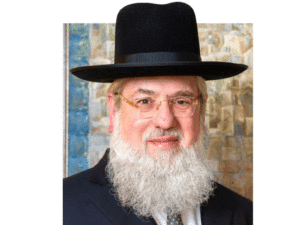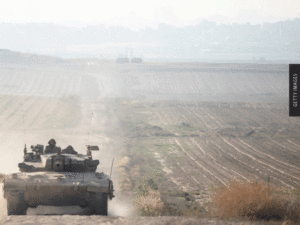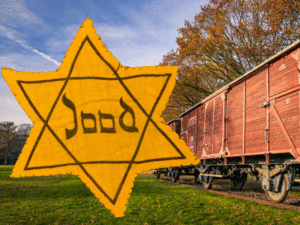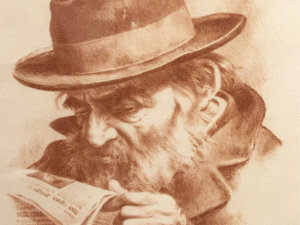The year is far from over, but we are already hearing about next year. 5782 is a Shmittah year and the farmers will need our help. Keren HaShvi’is is in full swing and some of the wonderful sun-parched tillers of the soil are making their once-in-seven-year visits to remind us that we are their silent partners in this holy endeavor. But fundraising aside, we need to prepare ourselves spiritually as well. Although most of us do not live in Eretz Yisroel and are certainly not horticulturists, there are tremendous blessings waiting for us for which we require preparation and attention. Just as now is the time to begin contributing to our partnership with those in the fields, we must begin the process of considering what Shmittah is all about and how to access its spiritual fruits.
The meforshim in Parshas Behar stress that the lessons of Shmittah – emunah, bitachon, tzedakah, noseh b’ohl, time-management, and many others – apply equally to those in Eretz Yisroel and to those outside the land. Furthermore, my rebbi, Rav Yitzchok Hutner, often explained that spiritual matters are best absorbed when they are active, not just potential. Thus, he limited his maamorim about the Yomim Tovim to those sacred times, because that is when we are granted the vessels to absorb their significance and depth. Shmittah is a profound opportunity to prepare our vessels for a prolonged period of divine providence, from which we can emerge uplifted and energized on multiple levels. Please consider this just the initial overture in what I hope will become a symphony of notes and sounds from many players in the world of Shmittah.
Let us begin with a Shmittah story that the Brisker Rov said must be retold over and over because it illustrates the power of Shmittah. Rav Mendelson was the rov of Komemiyus and founder of a dynasty that continues to this day. In the Shmittah year 5719 (1959), Komemiyus was one of the only farm communities six decades ago that kept the laws of Shmittah as they were given over 3,300 years ago. In the early months of that year, the moshav followed the opinion of the Ramban, who allows the reaping of grains designated for animals as long as they were planted before Shmittah. They must still be eaten with the laws of Shmittah-sanctity, but at least there would be some kind of crop. One Erev Shabbos, there was a mighty attack of locusts in the surrounding fields and it seemed that Komemiyus, too, would lose its meager harvest. However, as Shabbos approached, the grasshoppers completely stopped at the border of the Shmittah-observant fields. When informed of this open miracle, the Chazon Ish instantly called for Rav Mendelson to open the Ramban (Shemos 10:14). There he quotes from Rabbeinu Chananel, who says that when Shmittah miracles occur, sichu bechol nifle’osav – one is obligated to tell the story.
The second open miracle actually began two years earlier in 5717 (1957). The Sochnut had decided to plant orchards in several yishuvim, including Komemiyus. However, Rav Mendelson and the community leaders agreed to the plantings only on the condition that the upcoming Shmittah would be kept strictly according to halacha. At first, the government was reluctant to agree to this religious commitment, but the rov reported that “eventually, in 1958, Mr. Vigossky, the director of orchards, was extremely impressed with our dedication and signed a document committing to Shmittah. Some of the lower officials accused me of sabotaging the success of the orchard by religious limitations, but with the support of the Gerrer Rebbe and other gedolim, I persisted in our adhesion to halacha. Mr. Vigossky came to me at the end of Menachem Av 1959 and reported with great emotion: ‘I have twelve orchards under my jurisdiction and all have performed normally. However, your moshav has succeeded beyond any prediction. How can this be?’ I answered him that the first Ani Maamin, which articulates the basic beliefs of Judaism, is that Hashem alone is the One who accomplishes everything that happens in the world. In our orchard, too, since we followed G-d’s word, he made us successful. It was so recorded in the official annals of the agricultural reports under the jurisdiction of the State.”
That is the time zone we are about to enter. If we support and invest in Shmittah, we can certainly always be part of this miraculous period. But in the dangerous time we find ourselves, it behooves us even more to identify as closely as possible with the goals and ideals of Shmittah before and during the upcoming year of 5782. To return to the importance of emunah and bitachon – belief and trust – in the Almighty Creator, we must listen to the timeless words of the Kli Yokor: “Hashem was concerned that since Klal Yisroel was about to enter the land and engage in agricultural pursuits, they might forget their G-d. They would think that their own power and efforts were going to produce crops in a normative way, without divine intervention… Therefore, Hashem removed them completely from the rules of nature, extricating them from the limitations of all other peoples. Everyone else plants for a year or two, leaves the land fallow to rest, and returns to sow and reap again. Klal Yisroel, however, is commanded to plant consecutively for six years, yet the land will not be diminished in its productivity. Not only that, but the land will miraculously produce enough for three years. Furthermore, the people will be satiated by less, so that even a small crop will go a much longer way. Through these miracles, everyone will know that “the entire land is Mine” (Vayikra 25:2).
Even if we are not farmers, don’t we need these words and actions in our own lives? We, too, fall into the trap of feeling that our expertise, talents, experience and good fortune guarantee our success. Shmittah is the periodic reminder we require everywhere that we are in the hands of the One Who both created and runs the universe. It is foolish and myopic to think that we, who don’t till the soil, don’t need Shmittah in our lives. Even the world at large knows the concept of a sabbatical, where one can take a deep breath, reevaluate, and reassess what we have been doing. The novi reminds us in no uncertain terms that we often fall into the trap of following “mitzvas anoshim melumadah, rote learning of human commands” (Yeshayahu 29:13). Rav Aharon Leib Shteinman (Yimalei Pi Tehilasecha, page 153) quotes from the Chofetz Chaim that if one, G-d forbid, is missing a limb, he can still function, but if he has no heart, he is lost. One who performs mitzvos by rote is like one who has no heart and his actions are therefore meaningless. Shmittah is a time to restore our hearts and give us all a much-needed transplant of fresh blood and devotion.
One of the farmers who is now keeping his second Shmittah lamented that “the last time Shmittah came as a shock for me because I decided to observe it so close to Shmittah. I had little time to plan. It was like someone telling you that Yom Kippur is starting in one minute and you have to fast. You can do it, but preparing would help.” We, too, would do well to start now, so that we can benefit from the bountiful spiritual harvest we will reap at the end of 5782, with Hashem’s help.
The Abarbanel, too, reminds us that Shmittah is the great Shabbos, for just as Shabbos teaches us to stop our work and realize that Hashem is the One Who provides all for us, so does Shmittah teach us that “man lives for but seventy years.” If we spend all of our lives chasing the elusive and ephemeral parnassah, what will happen to the spiritual component of our existence? Shmittah comes just in time every seven years to reassert that there is a higher purpose to life than the daily grind and the constant danger of forgetting our ultimate purpose on earth.
The Chasam Sofer adds that it is clear that only the Creator could have commanded such a mitzvah as Shmittah. To tell a farmer to desist for a year from any normal agricultural work and yet expect that he would have enough for three years would be irrational and foolish unless it actually came from the One Who provides all the time. He gives and He can take away. He provides when we do some hishtadlus – effort on our own – and He provides when we do nothing at all. It is Shmittah that sets us upon the proper path, not only for seven years, but for all the years of our lives.
Let us conclude with one Shmittah lesson for all of us both inside and outside the land. Rav Moshe Feinstein (Dorash Moshe, Vayikra 25:3) points out that the Torah tells us to plant for six years and stop in the sixth. Why does the Torah have to tell us to work during the six years? Wouldn’t it have been sufficient to say that in the seventh year, the land must rest? Rav Moshe answers that one is only permitted to rely upon miracles when Hashem commands us to so. However, during the first six years, we dare not say that G-d will provide without at least some hishtadlus. On the other hand, some people think that they may skip tefillah b’tzibbur because they must work during that time, but since Hashem has commanded us to daven with a minyan, this is no excuse, since Hashem will provide (see Mishnah Berurah 90:29). When we follow the Shmittah guidelines, our Father in heaven will give us whatever we need. Through participating in the great mitzvah of Shmittah, may we truly receive our parnassah from His hands directly, with honor and abundance.








